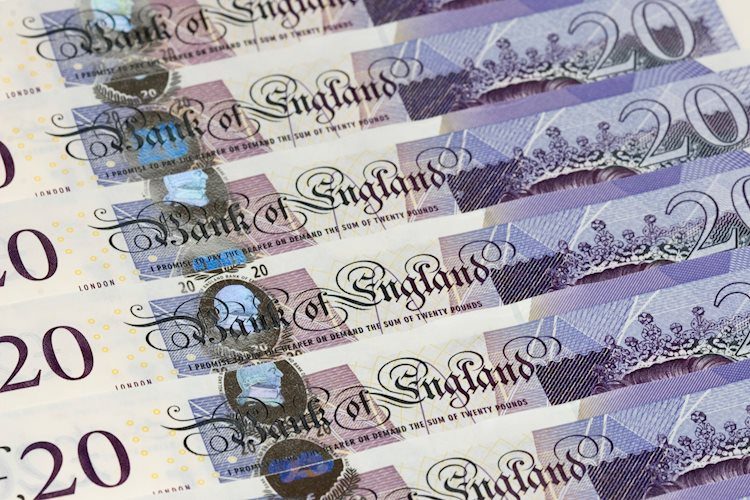- GBP/USD trades in negative territory for the fifth consecutive day near 1.2685 in Thursday’s Asian session.
- US inflation rose to 2.6% YoY in October, as expected.
- Investors await the BoE’s Governor Andrew Bailey speech on Thursday.
The GBP/USD pair extends the decline to near 1.2685 during the Asian trading hours on Thursday. A rally in the US Dollar (USD) to the highest level since November 2023 weighs on the major pair. The Bank of England (BoE) Governor Andrew Bailey is set to speak later on Thursday.
Data released by the US Department of Labor Statistics on Wednesday showed that the US Consumer Price Index (CPI) came in line with expectations, rising by 2.6% YoY in October. Meanwhile, the core CPI, which excludes the more volatile food and energy categories, climbed by 3.3% YoY in October, mating with the estimation. The markets expect the US Federal Reserve (Fed) to keep on track to reduce rates at their next meeting in December.
“No surprises from the CPI, so for now the Fed should be on course to cut rates again in December. Next year is a different story, though, given the uncertainty surrounding potential tariffs and other Trump administration policies,” noted Ellen Zentner, chief economic strategist at Morgan Stanley Wealth Management.
Fed officials remain cautious on rate cuts. On Wednesday, Dallas Fed President Lorie Logan said that the US central bank should proceed cautiously on further interest rate cuts to keep from inadvertently reigniting inflation. Additionally, St. Louis Fed President Alberto Musalem stated that sticky inflation figures make it difficult for the US central bank to continue to ease rates. Traders raise their bet on another quarter-percentage-point rate cut in December, albeit at a slower pace, through mid-2025.
On the UK’s front, the BoE policymaker Catherine Mann said monetary policy is impacting inflation more quickly than economic theory suggests, allowing the central bank to wait before making big cuts to interest rates. Traders have fully priced in only two quarter-point rate cuts by the end of 2025, which would put the BoE lag behind other major central banks.
Traders will take more cues from the BoE’s Bailey speech later on Thursday for fresh impetus. Less dovish comments from the BoE policymakers could underpin the Pound Sterling (GBP) against the USD.
(This story was corrected on November 14 at 06:35 GMT to say, in the last paragraph, less dovish comment from the BoE policymakers could underpin the Pound Sterling (GBP) against the USD, not the GBP.)
Pound Sterling FAQs
The Pound Sterling (GBP) is the oldest currency in the world (886 AD) and the official currency of the United Kingdom. It is the fourth most traded unit for foreign exchange (FX) in the world, accounting for 12% of all transactions, averaging $630 billion a day, according to 2022 data. Its key trading pairs are GBP/USD, also known as ‘Cable’, which accounts for 11% of FX, GBP/JPY, or the ‘Dragon’ as it is known by traders (3%), and EUR/GBP (2%). The Pound Sterling is issued by the Bank of England (BoE).
The single most important factor influencing the value of the Pound Sterling is monetary policy decided by the Bank of England. The BoE bases its decisions on whether it has achieved its primary goal of “price stability” – a steady inflation rate of around 2%. Its primary tool for achieving this is the adjustment of interest rates. When inflation is too high, the BoE will try to rein it in by raising interest rates, making it more expensive for people and businesses to access credit. This is generally positive for GBP, as higher interest rates make the UK a more attractive place for global investors to park their money. When inflation falls too low it is a sign economic growth is slowing. In this scenario, the BoE will consider lowering interest rates to cheapen credit so businesses will borrow more to invest in growth-generating projects.
Data releases gauge the health of the economy and can impact the value of the Pound Sterling. Indicators such as GDP, Manufacturing and Services PMIs, and employment can all influence the direction of the GBP. A strong economy is good for Sterling. Not only does it attract more foreign investment but it may encourage the BoE to put up interest rates, which will directly strengthen GBP. Otherwise, if economic data is weak, the Pound Sterling is likely to fall.
Another significant data release for the Pound Sterling is the Trade Balance. This indicator measures the difference between what a country earns from its exports and what it spends on imports over a given period. If a country produces highly sought-after exports, its currency will benefit purely from the extra demand created from foreign buyers seeking to purchase these goods. Therefore, a positive net Trade Balance strengthens a currency and vice versa for a negative balance.

